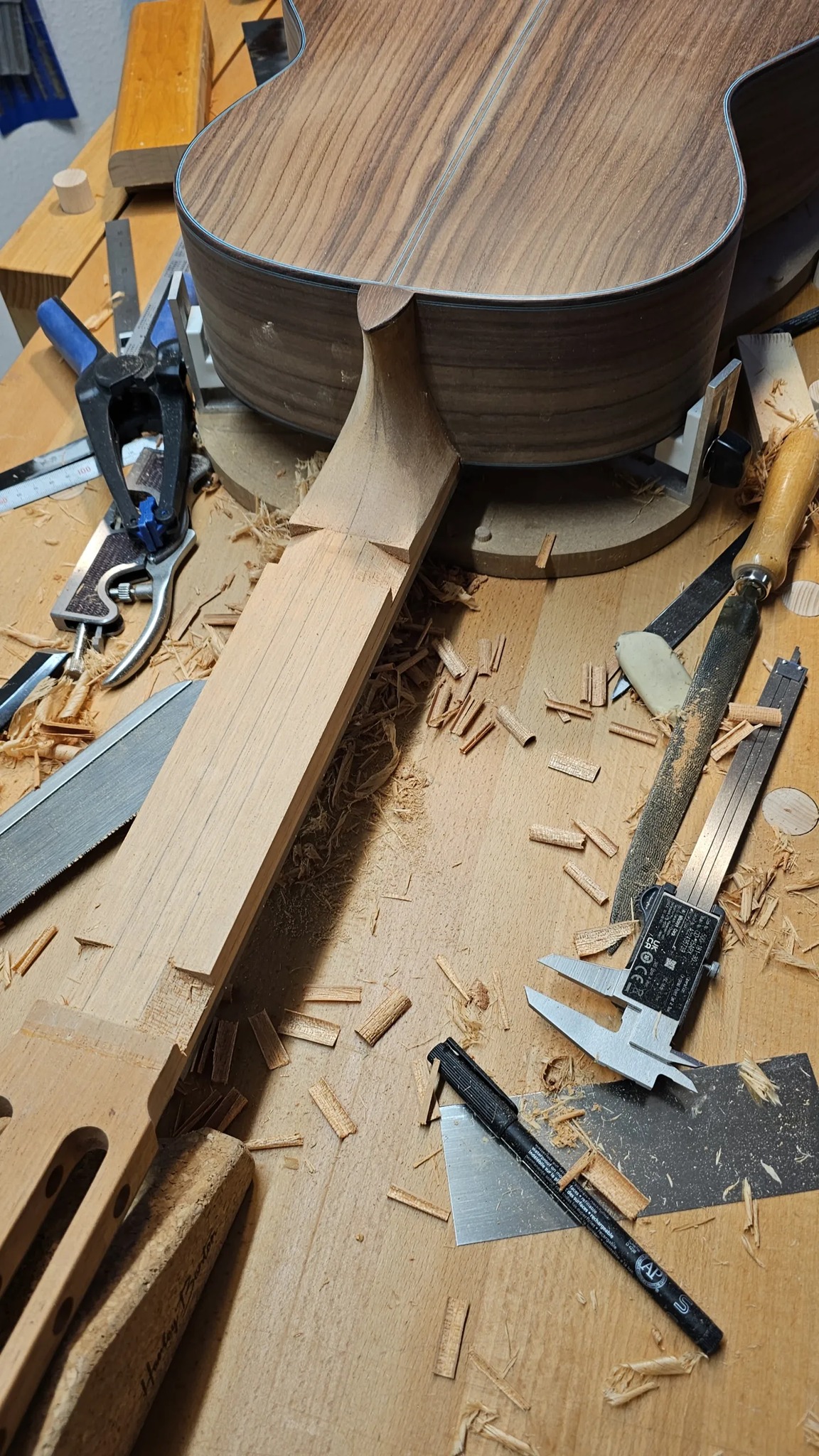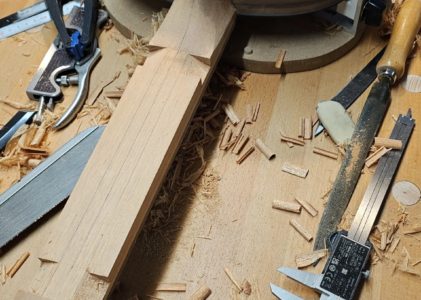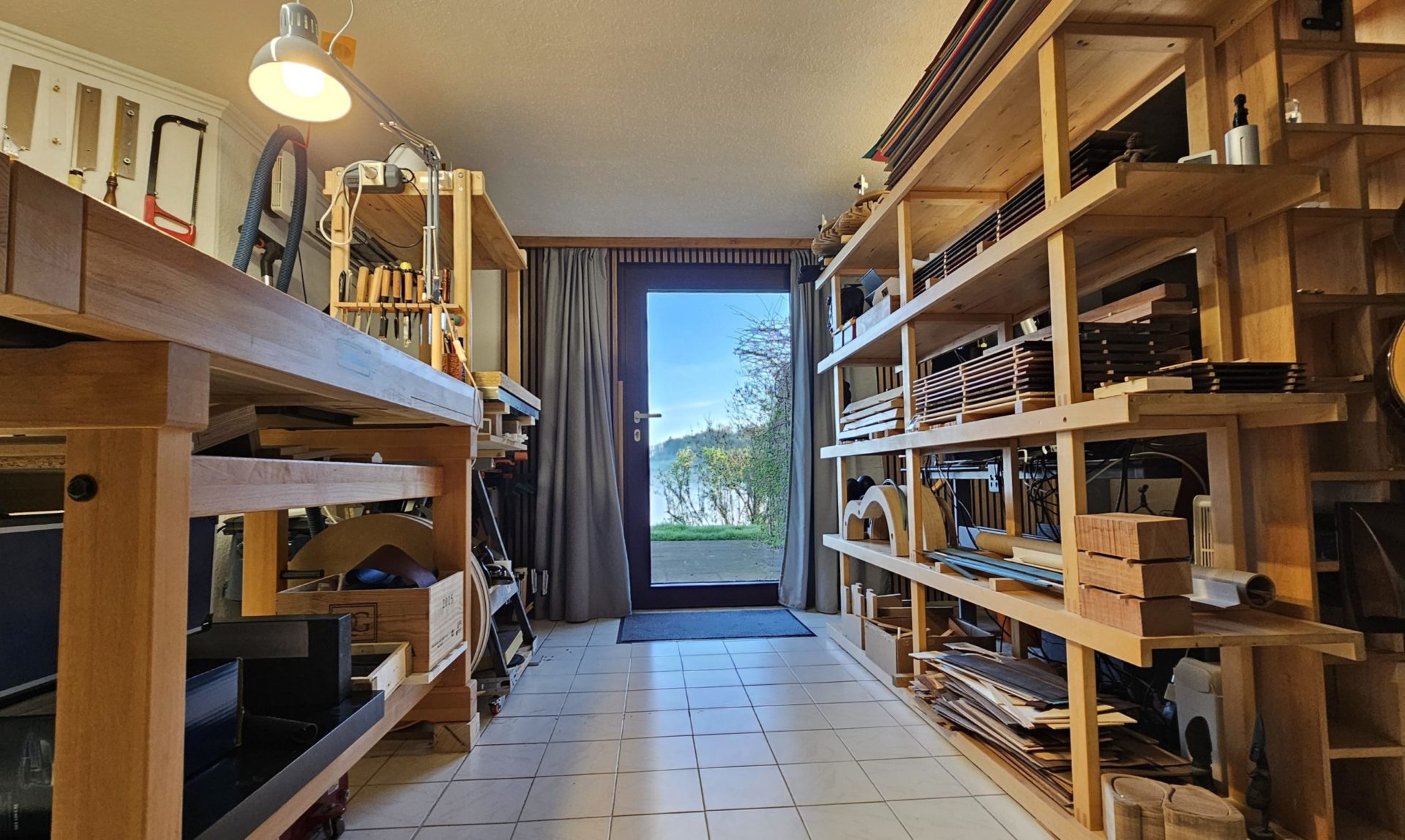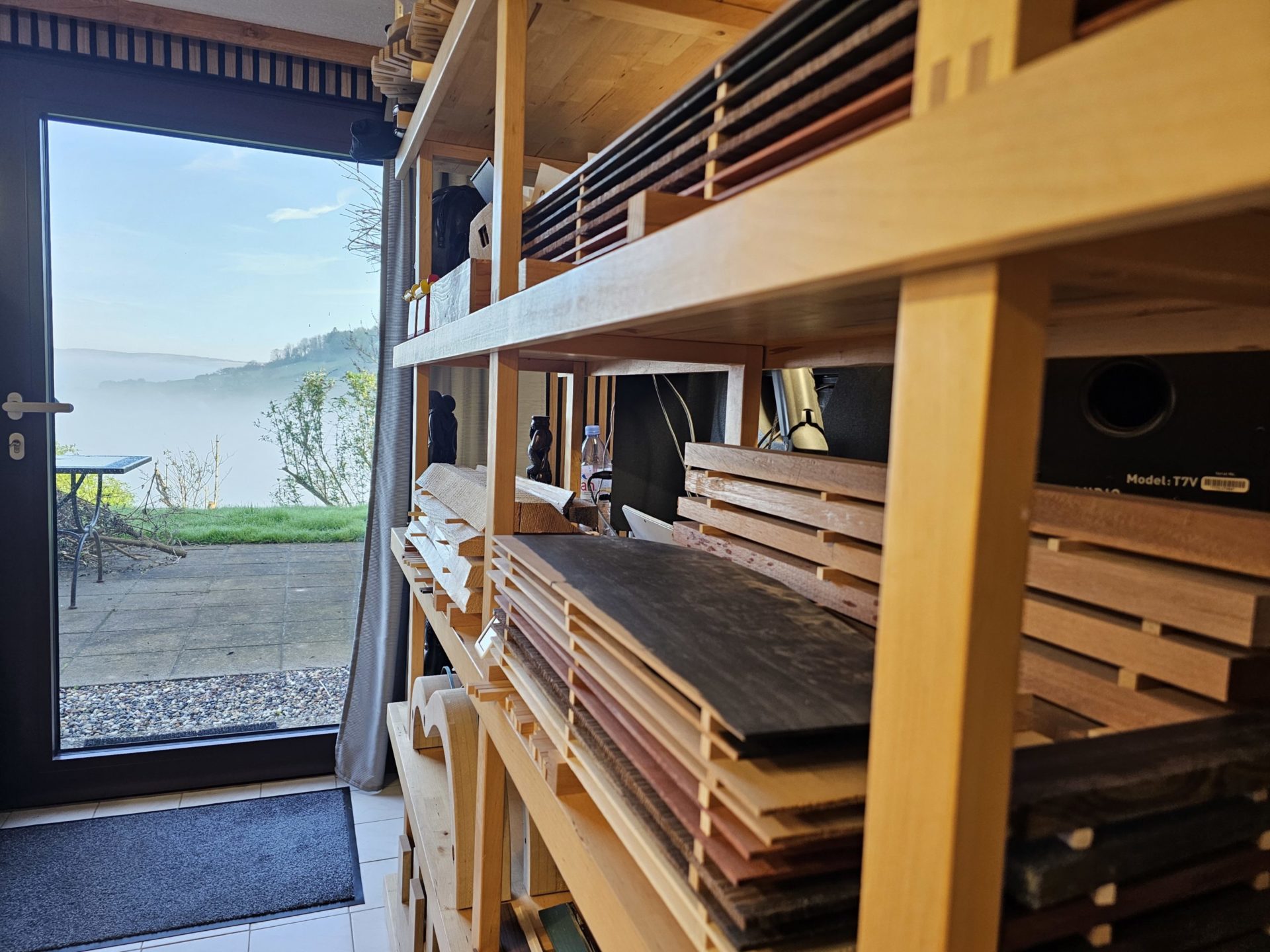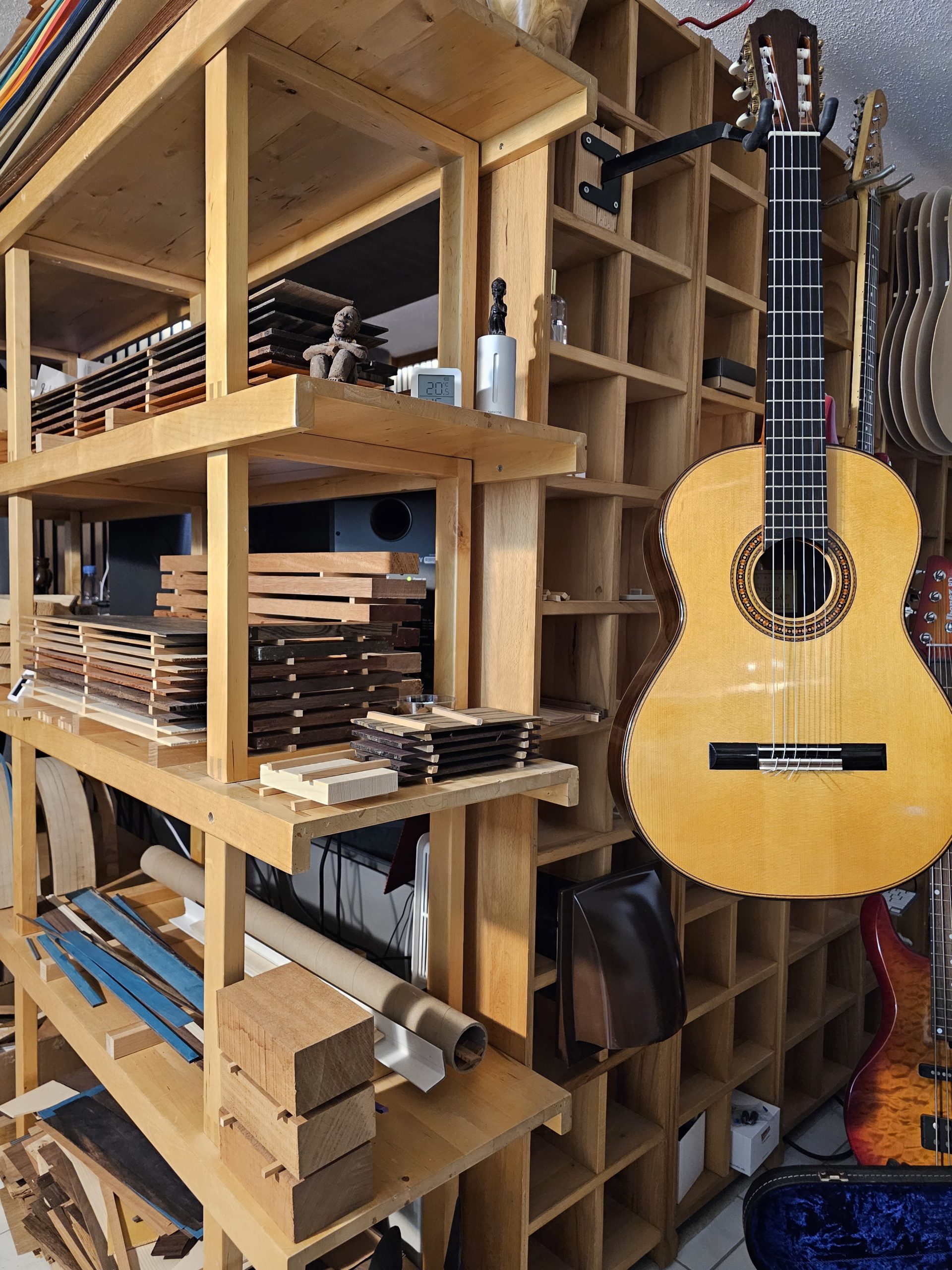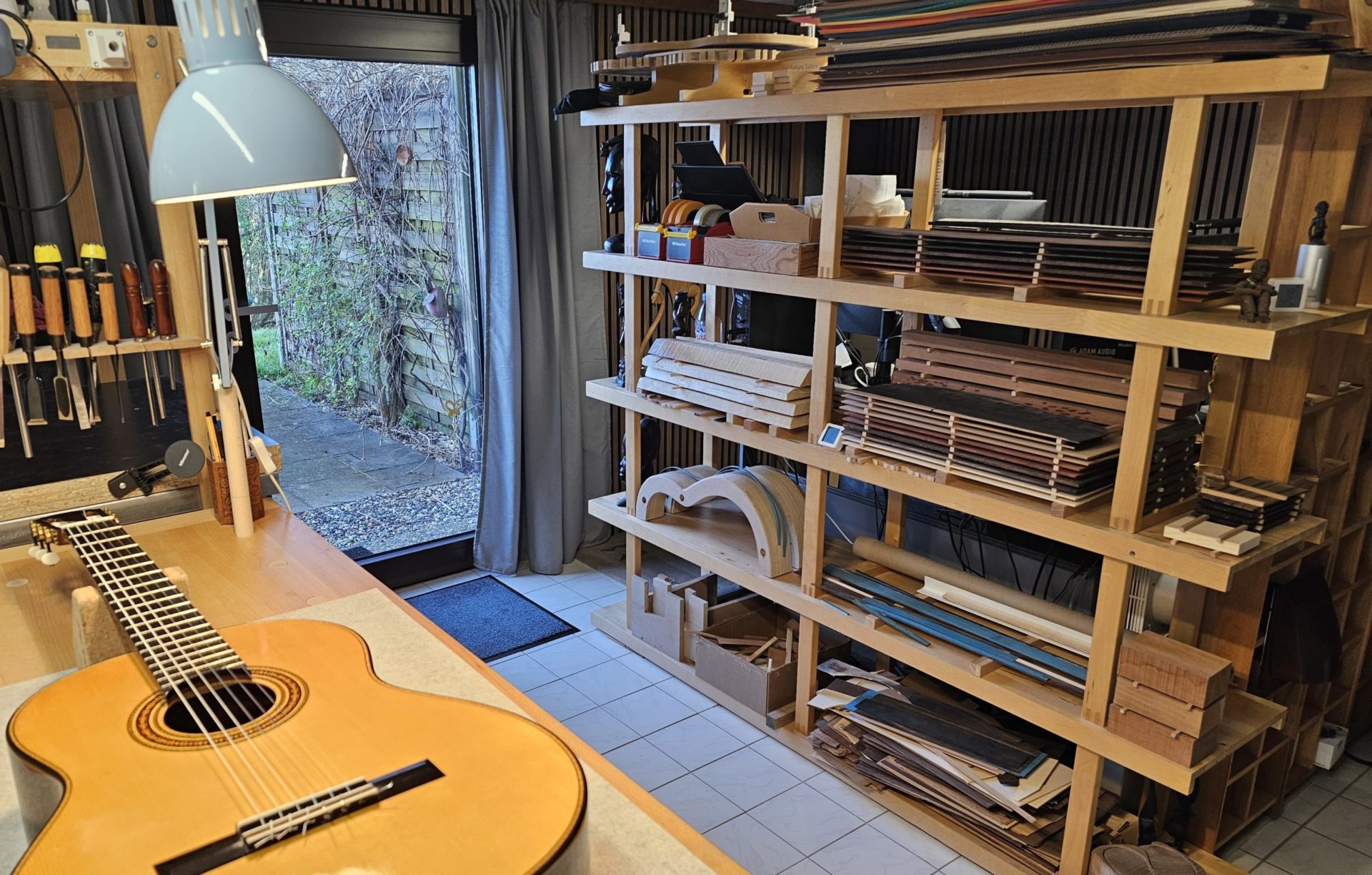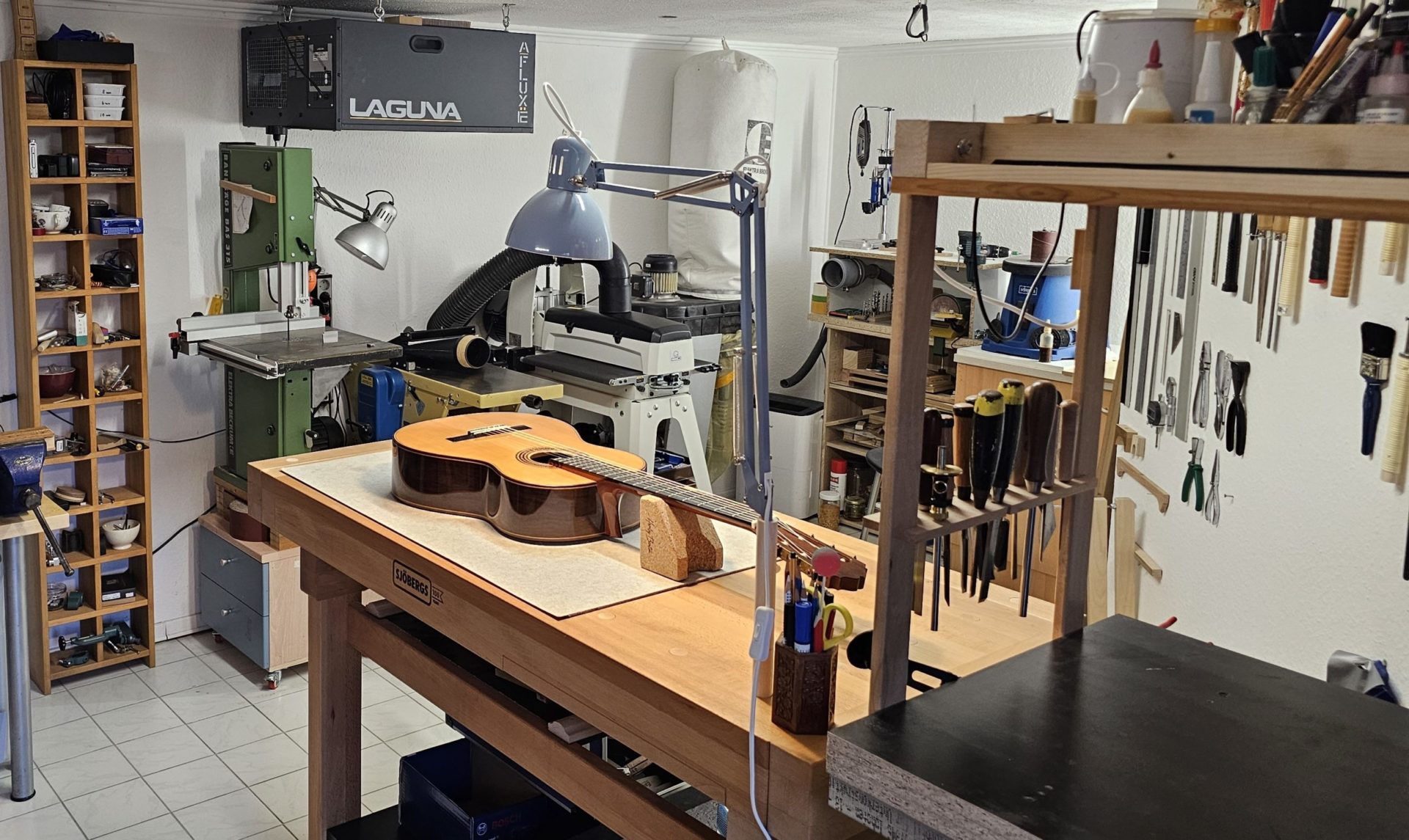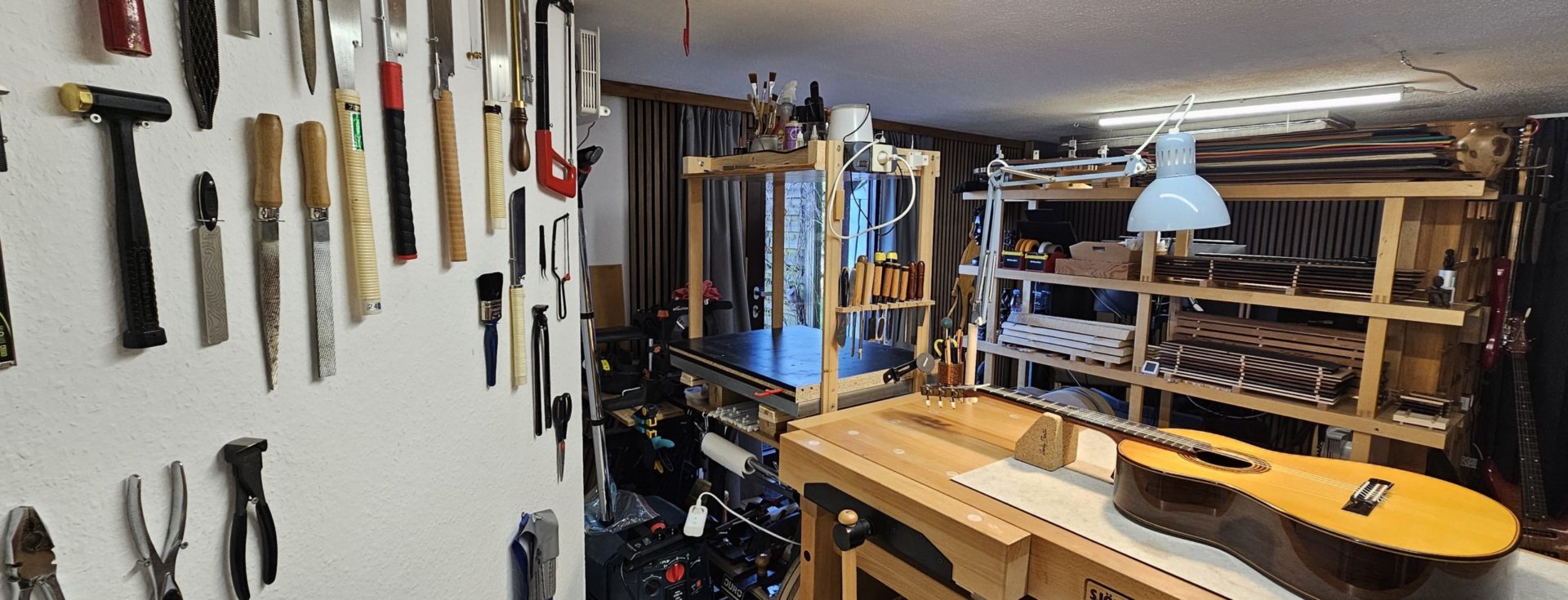Welcome to my workshop!
This space is the manifestation of all that fascinates me: the value of tradition, the beauty of natural materials, and the benefits of attuned technological systems.
I obsess over the level of humidity in the workshop because I believe that this is the single most important factor that ensures that the guitars I make are architecturally sound. I have devised a computer-controlled humidity-management system which constantly reads six sensors strategically placed around the workshop. A PID system — similar to that used in sous-vide cooking, or the cruise control in your car — continuously controls humidifier and dehumidifier units working in tandem, to keep the average humidity across the workshop between 45% and 46%. If the moisture in any part of the workshop goes above or below the average, ventilators kick in to circulate the air inside and bring that part of the workshop back in line. Two heat retention units exchange the air in a controlled manner and introduce fresh air into the workshop. The system is so sensitive that it reacts to the change in humidity when a person enters or exits the room.
Should anything go wrong when I’m away from the workshop, the system is programmed to alert me. It also keeps logs for verification purposes.
I have also designed a similar PID system to make sure that hide glue (which I use on most of my joinery) is heated to an exact 62.8°C, which is the best temperature for the strongest joints.
If this sounds obsessive, it’s because it is — I want to ensure that my guitars are built under the best of conditions, and that’s something I do not want to compromise on.
And yet, I strive to limit the use of machinery to the minimum. Previously, as a general woodworker, I relied heavily on power tools to get the job done. However, time spent with Brian Itzkin, a luthier from New York, and a good friend and mentor from whom I have learnt a lot, has instilled in me a deep appreciation and respect for the time-honoured practice of manual chisel and plane work. Building an instrument is all about the constant adjustment and tuning of the materials to achieve a specific goal. To date, no power tool is able to achieve that.
“It is the result of the feel of the tips of the thumb and forefinger communicating to my intellect whether the soundboard is properly worked out to correspond with the guitar maker’s concept and the sound required of the instrument.”
— Antonio de Torres
